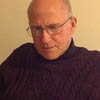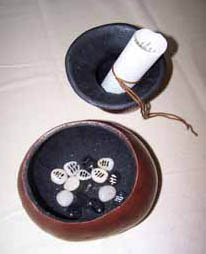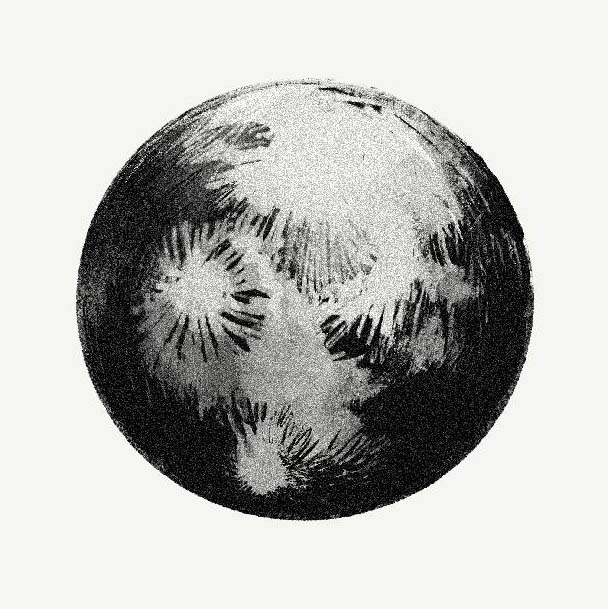
This is the second in a series of excerpts from an ongoing dialogue between Russell Lockhart and Paco Mitchell. The first dialogue—and what prompted this exchange between them—is published in Dream Network Journal/ Spring 2008. Volume 27 Number 1.
Paco Mitchell: Last time you said, “The eventual discovery—or actually, rediscovery—of dreams (which has only just begun) will be as monumental for our fate as the discovery of fire was in the early days of our becoming human.” Can you say more about this “rediscovery” of dreams and what it might mean collectively?
Russell Lockhart: Well, the audacity of that statement when reflected back to me is alarming! But then intuitions are frequently alarming. One knows the truth in one’s bones, but then trying to convey that truth to others is about as easy as trying to show someone your living skeleton! However, here are some things embedded in this idea. The first is centrality. Dreams will become once again ever more central and crucial in individual and collective life—in spite of all that animates against this process at the present time. Imagine a collective life at all levels informed and led by dreams! Almost impossible to imagine, but I believe it’s coming. The second is continuity. At present, our experience of the reality of psyche is terribly discontinuous— dreams are disconnected from our daily life, synchronicities are separated so as to seem unrelated, we experience our own dream life as not connected with the dream life of others, or with the world. But, at bottom, we are all linked by a kind of rhizome layer. There is the appearance of discontinuity only because our consciousness “dips in” from time to time and there is much that works against dipping in at all. But the future will bring the discovery that we are all connected at the rhizome level, that the full story of our dream life and the dream life not only of others but of all things is accessible there. The third is circulation. I think of the image of Aquarius here, the Water Carrier, which I imagine as individuals immersing themselves in the rhizomic layer and “bringing back,” that is, telling in words and deeds or in other ways, the “story” of what was experienced there.
PM: I can imagine lots of different forms of public telling: books, articles, poems, songs, plays, films, conferences, rituals, dream-groups, discussion-groups, etc. But private telling as well—dreamsharing between couples, friends, parents and children, with strangers, and so on. Is there a fourth aspect?
RL: The fourth is what I think of as coming—and I mean this in all its senses. We have hints of a climax of some inordinate dimension coming. While futurists such as Ray Kurzweil see that “the singularity is near,” and argue that it will be technology that ushers in “the Great Coming,” I think rather it will have more to do with the advent of “the Coming Guest,” that spirit of the future foreseen by (George Russell, the Irish poet) and by Carl Jung. I think people far and wide are experiencing what I call “inchoate anticipations” of this singularity in their numinous dreams and synchronistic experiences. What is it that will be born from this orgasmic singularity that all of humanity will experience? I tend to think that our consciously directed visions will fail us and that we will need to look with a more welcoming spirit to art and dreams to even begin to get a sense of what is coming.
PM: This resonates with what I came to in “Dreaming Planet” (Dream Network Journal Volume 26, Numbers 3 & 4; Volume 27, Number 1), where I expressed the hope that—if enough of us pool the wisdom we sometimes encounter in our dreams—a new jolt of evolutionary energy may work its way into consciousness in time to help humanity shed its skin and manifest whatever is trying to be born. What you say brings to mind this dream from the early 80s, which may be an example of what you are calling “anticipations.” In the first part
...American military planes are returning from battle and they are dirty and dilapidated. They all turn into one large commercial airliner, likewise dirty and dilapidated, which subsequently crashes. Out of the wreckage rise four large, iridescent, translucent spheres. They are named: Gold, Silver, Zephyr and Harmonium. They stop in front of me. I feel they have some intention in regard to me. I go into a building and tell a dignified, authoritative woman what I have seen. “Yes,” she says, “people are working on that (i.e., the four spheres) all over the world.” The fourth sphere is somehow associated with the image of a tree.
RL: You know, when people hear dreams (or read them), they invariably ask, “What does this mean?” This, I believe, is a disruptive question. A more circulatory response would be to attend to what hearing the dream arouses. “Understanding” the dream is not nearly as important as following the hints the dream generates. That is what I call the Eros function of a dream and in that regard dreams are more like stories to be continued than objects to be put under the microscope of understanding. You had that dream some twenty-years ago or so, and even then, there is that clear image of people working on the spheres all over the world. Many people are working in isolation I am sure. What a difference it would make if more people knew of this!
PM: Here’s a more current dream that seems to work along the same lines:
A foundry has been setup in an outdoor location. The terrain is sloping and uneven. People are lined up in a long, serpentine column, waiting for their sculptures to be cast in bronze. Each person has made one piece. To my surprise, I am free to wander around observing without hindrance. I walk over to where the metal is to be poured, the “crucial” area where the “crucible” is used. As the first mold is being positioned for pouring, I see a very large hydraulic/mechanical arm swing toward the pouring area. It crashes into the mold and breaks it. Nevertheless, it seems, in the confusion, that the first mold has somehow been poured. The arm is holding a slightly tilted crucible. I see the molten metal inside and can tell that it is beginning to crystallize, which means that there is not much time left to carry out the remaining pours. If the metal gets too cold, it will stop flowing and will solidify inside the crucible. Suddenly, though, the first broken mold falls away and I see a perfectly round, polished bronze sphere (in realistic terms of a rough casting, this would be an impossibility). It is a stunning sight. My impression is that there is a relationship between the breaking of the mold by the “large arm” and the paradoxical perfection of the resulting casting, i.e., the perfect sphere emerges from “out of the wreckage.”
RL: Imagine, everyone with their own individual sculpture! What a contrast to the current craze of near viral mimetic duplication where everyone wants to be like someone or something else.
PM: Imagine how many other similar dreams are being witnessed each night by the “planetary dream brigade,” and what a spectacular benzene-ring those dreams would form, if only they could be brought to light. Hopefully, we can bring some of them forth “before the metal freezes.”
RL: Yes, your dream has a sense of urgency and I see this same sense of urgency in many dreams of this nature.
PM: I recall Jung referring to “the last fifty years of civilization” just before he died in 1961. That puts his time point around the same 2012 that is so much the object of focus now. We don’t have forever to carry out the transformations implicit in the dream. Yet, to say that the situation is urgent doesn’t necessarily mean we have to “speed things up.” In fact, the opposite may be true. There is that Zen story where the Master addresses his monks: “There are many urgent tasks that we must attend to, and little time. Therefore, we must slow down.”
RL: Precisely the quality that is near extinction, but so vitally needed now. Only then would we be able to experience “the joy that dwells far within slow time,” as the poet John O'Donohue tells us in A Blessing for One Who is Exhausted, a poem that might just be the necessary medicine for the exhaustion one hears as a wailing lament everywhere these days.
PM: “Lament” is a good word for it. I can imagine the world‘s symptoms— both on personal and environmental levels—laments for the loss of “slowtime.” By the way, Russ, can you say more about the idea that synchronicities are so separated as to seem unrelated?
RL: Synchronicities impact us so strongly because, for a brief moment, the “veil” that normally hides what Keats called the “penetralium of mystery”—that rhizomic layer I referred to earlier—is pulled aside and we have a momentary glimpse of our fate. These encounters range from invoking only mild curiosity to the most profound, stunning, even life-altering experiences of the conjoining of two “realms” of life. But synchronicities are not isolated events. There is a theme or motif, some “thread of destiny” that links synchronicities together, as if periodically we stepped into a darkened theatre to witness the play going on there and tried from these momentary and periodic glimpses to “make sense” of them. It is hard, some times near impossible. But there is a play, a story, going on behind the veil— of that I am convinced.
PM: An example?
RL: I was a kid about 8 years old, horsing around with my Cub Scout buddies on a mountain trail. At one point, I lost my footing and began to tumble down, was getting pretty bashed up, when suddenly I “saw” a huge owl in the sky and its speech penetrated me: “Grab the tree.” I smashed into a small tree, breaking my fall, and held on as the owl instructed. That tree was the last thing in my way before going over the precipice and my certain death. This is synchronistic because of the conjunction in time of two realities. That owl saved my life. But all synchronicities have an “intention.” So, I must ask, “What for?” Since then there have been many synchronicities involving owls... in dreams, visions, and real owls as well. I feel as though I was inducted or initiated into... into what? When I look at these synchronicities across all these years, now I see they form something like stepping stones, a story-path if you will. I think this is what you are pointing to as well in your articles in these pages, on the way dreams reveal one’s destiny and fate. And you know how “animated” (as if animals were somehow involved) synchronicities have become between us since we began this dialogue.
PM: I’ve also been thinking about all these remarkable synchronistic events we’ve been experiencing on both sides of our exchange. In particular, I’m intrigued by the owls. I’ve never dreamed about owls, to my knowledge, until recently. I still think there is a connection between the owl and the heron (my totem animal, so to speak). In myth, the heron is definitely associated with dawn whereas the owl is largely nocturnal. But then why did I once see a heron fishing at 1:00 AM on a cloudy, moonless night? I learned from an optometrist that herons have a tapetum lucidem—a layer of reflective cells at the back of their eye, like all nocturnal creatures: owls, mice, cats. Seeing into the dark–what a gift! The planet has been spinning since its inception; every creature is conditioned by diurnality. Therefore, we’re programmed for light and dark phases—above all, the animals, who were here long before humans. They carry so much more history than we do, and still they seek us out in our dreams and synchronicities, apparently for the purpose of dispensing their evolutionary wisdom, teaching us the value of seeing into the dark. Your early “tumbling” experience shows what life-savers they can be. Maybe someday we humans will remember just how vitally important they really are to us.
RL: Jung decried the loss of the animal spirit and felt it had a lot to do with the loss of vitality across the whole dimension of religious experience. The animals went the way of dreams in formalized religions, so the animals took up residence, as it were, in the dream world.
PM: Yes, the dove of Aphrodite, the eagle of Zeus, the owl of Athena, the heron of the Egyptians and Greeks, the phoenix of the Romans—all virtually subsumed by the dove of the Christian Holy Spirit. But then the Holy Spirit itself has been subsumed by the Materialistic Spirit that has become the world’s religion. Where did that Holy Spirit as Paraclete go? Into the unconscious. And now it is pressing and forcing its way into consciousness through whatever cracks and channels are open to it: accidents, injuries, dreams, synchronicities, drug experiences, meditation, prayer... ecstasies” of all kinds.
RL: Yes, those are all places of “inchoate anticipations” of what is coming, what cannot be held back.
PM: In my opinion, humanity has reached a crucial choke-point, a funnel through which everything that will happen in the near future must pass. The amplitude of time that allowed the Egyptians, the Greeks, the Romans such leisurely elaborations of their myths is foreclosed to us. The funnel, like a venturi, or even a tornado, accelerates our experience of time to a disorienting degree. Our new myth will be born out of compressions of time and space such as we have never seen before. The best, most hopeful comparison I can think of is the compounding of heavy elements in the heart of an exploding star, or perhaps, in more earthly terms, the subterranean mystery of diamonds.
RL: Sounds like something we should dream on, Paco.
...to be continued.




















